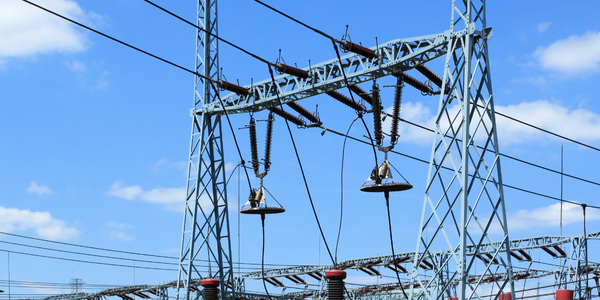技术
- 网络与连接 - 射频收发器
- 网络与连接 - WiFi
适用行业
- 电网
- 电信
适用功能
- 质量保证
用例
- 现场人员安全管理
- 交通模拟
服务
- 云规划/设计/实施服务
- 测试与认证
关于客户
Ossia Inc. 是一家私营公司,总部位于华盛顿州贝尔维尤,致力于彻底改变人员和行业的移动性和连通性。该公司帮助行业领导者和服务提供商创建生态系统,为小型设备提供智能无线电源,这将改变整个能源行业的游戏规则。 Ossia 的专利无线电源 Cota® 技术的传输方式与 WiFi 非常相似,本质上是安全的,并且即使在设备处于运动状态时,也可以通过空中和远距离提供真正的无线电源。该技术于 2013 年首次公开推出,此后 Ossia 的工程师团队不断发展和改进其无线充电技术。
挑战
Ossia Inc. 是一家彻底改变人员和行业的移动性和连接性的公司,在演示 2-3 米外的安全无线电力传输方面面临着重大挑战。该公司的专利无线电源 Cota® 技术的传输方式与 WiFi 非常相似,需要证明对人类安全,并且符合联邦通信委员会 (FCC) 规定的每公斤 1.6 瓦特吸收率 (SAR) 限制。该技术旨在通过空中和远距离提供真正的无线电源,即使设备在运动时也是如此。然而,这项技术的安全性至关重要,特别是考虑到可能在不知不觉中进入无线电力传输路径的物体或生物的潜在影响。
解决方案
为了应对这一挑战,Ossia Inc. 采用 Altair 的综合电磁软件 FEKO® 进行仿真。该软件的混合数值方法能够有效分析各种电磁问题。 Ossia 工程师使用 FEKO 进行模拟,对具有实际特征的人体组织进行建模,展示 Cota 技术在所需限制下的性能。该团队使用 FEKO 的混合解决方案成功解决了在人体模型存在的情况下求解 200 多个天线阵列元件的挑战性任务。该软件的脚本功能还用于自动执行不同阵列配置和虚拟位置的模拟,从而减少设置时间并最大限度地减少错误。这些模拟成功支持了 Ossia 的技术测试,有助于将 Cota 无线充电推向主流技术。
运营影响
数量效益

Case Study missing?
Start adding your own!
Register with your work email and create a new case study profile for your business.
相关案例.

Case Study
Hydro One Leads the Way In Smart Meter Development
In 2010, Ontario’s energy board mandated that time-of-use (TOU) pricing for consumers be available for all consumers on a regulated price plan. To meet this requirement, Hydro One needed to quickly deploy a smart meter and intelligent communications network solution to meet the provincial government’s requirement at a low cost. The network needed to cover Hydro One’s expansive service territory, which has a land mass twice the size of Texas, and its customers live in a mix of urban, rural, and remote areas, some places only accessible by air, rail, boat or snowmobile. Most importantly, the network needed to enable future enterprise-wide business efficiencies, modernization of distribution infrastructure and enhanced customer service. To meet these needs, Hydro One conceptualized an end-to-end solution leveraging open standards and Internet Protocols (IP) at all communication levels. The utility drew upon industry leaders like Trilliant to realize this vision.

Case Study
Selling more with Whirlpool
Whirlpool wanted to add connectivity to appliances and transform the company's relationship with customers. Traditionally, Whirlpool interaction with customers was limited to purchases made once every ten years. Connected washer and dryers provide exciting new features like remote management of start times and inter-machine communication.

Case Study
SAS® Analytics for IoT: Smart Grid
Companies face falling revenues, rising infrastructure costs, and increasing risk of outages caused by inconsistent energy production from renewable sources. Less money is coming in as more people and organizations take steps to curb their energy use. Utilities are paying more to maintain and build infrastructure due to increasing complexity, resulting from the rising number of intermittent and variable renewable energy sources connected in the distribution grid.

Case Study
Enel Secures Italian Power Generation Network
Electric energy operators around the world are working to increase the reliability and cyber resiliency of their systems. This includes Enel, a global power company that manages and monitors the Italian power grid. This grid:• Serves 31 million customers• Has a net installed energy capacity exceeding 31 gigawatts• Includes more than 500 power generation plants,including hydroelectric, thermoelectric, and wind• Is managed and monitored by Enel 24/7/365• Is operated by Terna, the Italian Transmission System Operator (TSO)Enel is responsible for the availability of the grid’s underlying ICS and industrial network. It also manages Regional Control Centers and Interconnection Centers which connect with the TSO. The TSO manages the flow of energy to the grid plus controls and remotely regulates the power generation of power plants, increasing and decreasing power production as required. The complex system of interaction and cooperation between Enel and the TSO has strong security implications as well as operational and business challenges.

Case Study
Vodafone Hosted On AWS
Vodafone found that traffic for the applications peak during the four-month period when the international cricket season is at its height in Australia. During the 2011/2012 cricket season, 700,000 consumers downloaded the Cricket Live Australia application. Vodafone needed to be able to meet customer demand, but didn’t want to invest in additional resources that would be underutilized during cricket’s off-season.




